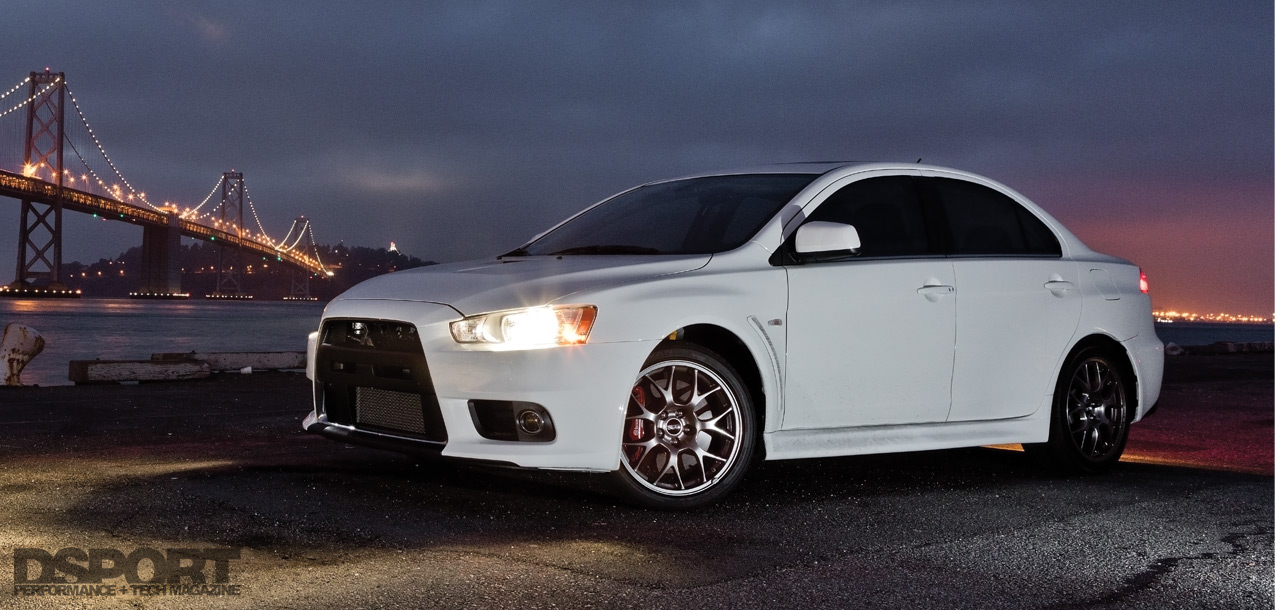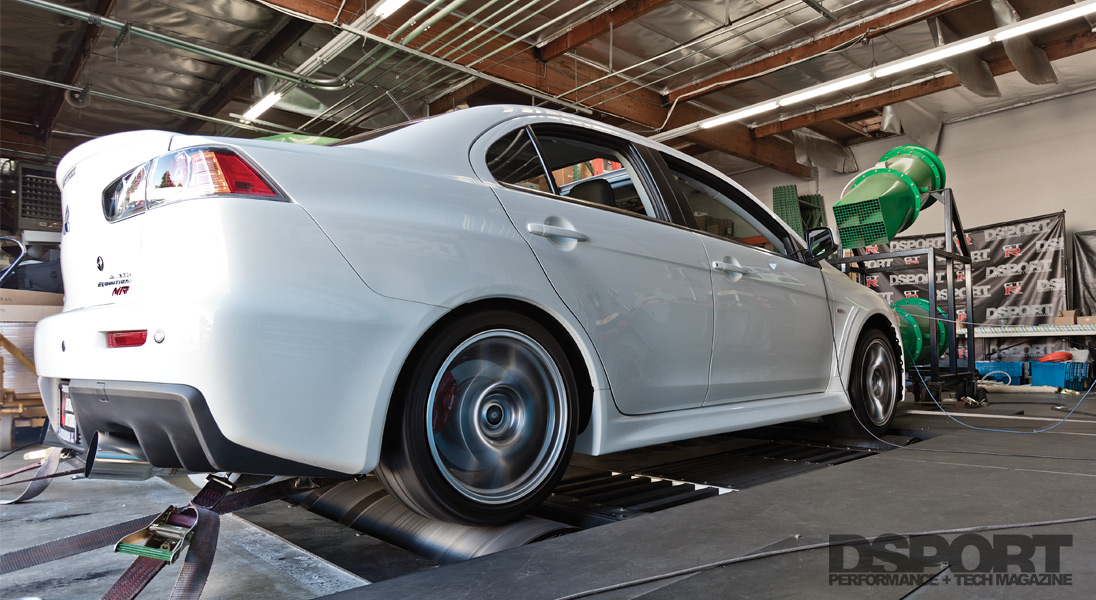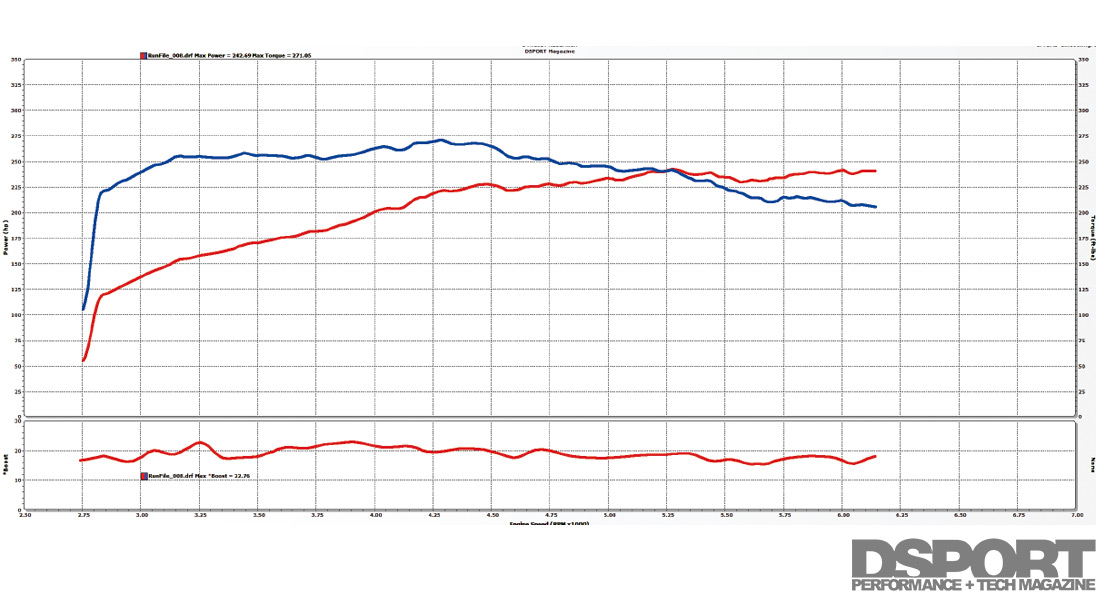Helping an engine breathe easier improves its output, which is why the exhaust and An ARK Design Superflow Dual Exit exhaust was selected to replace the stock exhaust, routing the spent gasses after the catalytic converter to the rear of the chassis. When it comes to turbocharged vehicles, bigger exhaust piping is always better. The ARK Design Superflow exhaust features robotically TIG welded, 3.5-inch, mandrel bent piping that splits into two 3-inch sections finished with polished mufflers and 4.5-inch tips. The mufflers include a high temperature 1,000°C fiberglass packing material for longevity and consistent sound dampening.
On the intake side, we chose AEM Induction’s Cold Air Intake system (p/n 21-678C) to replace the factory intake from the intake duct all the way to the compressor inlet of the turbocharger. This California street legal, C.A.R.B. exempt kit (CARB D-670-21) includes a new rubber inlet hose that maintains the factory bypass valve location andsupporting vacuum ports. An aluminum pipe fitted with a MAF sensor flange ensures that the sensor remains in the proper position in the intake plumbing. A new plastic air box replaces the factory piece, and houses AEM’s Dry Flow air filter. The stock intake duct snaps into the air box to continue to supply cool dense air to the filter.
THE DYNO
Once the CZ4A chassis was strapped down to DSPORT’s Dynojet 424xLC2 Linx AWD dynamometer, the baseline figures checked in at 242.7 whp and 271 lb-ft torque to the wheels with a peak boost pressure of 22.76 psi. This is in line with the anticipated driveline loss when measuring power and torque at the wheels.
Baseline
242.69.93 WHP @ 5,280 RPM
271.05 lb-ft @ 4,280 RPM
22.76 psi @ 3,900 RPM
Testing started without even turning a wrench. After searching through Cobb Tuning’s map offerings, we plugged the V3 Accessport into the OBD-II port under the dash and loaded the Stage-1 ACN91 map into the ECU. This ECU calibration was designed for use with a stock vehicle, with or without an aftermarket exhaust. On the dyno, peak power increased by 7.21 whp to 249.91 whp, while peak torque took a half lb-ft step down to 270.54 lb-ft. Peak boost pressure was also slightly decreased, coming in at 22.59 psi, 0.17 psi less compared to baseline. While offering a slight improvement over stock peak horsepower and checking in a hair below on torque, the Stage 1 map realized a greatest incremental horsepower gain of 9.9 at 5,150 RPM and the greatest torque gain of 11 lb-ft at 3,480 RPM.




